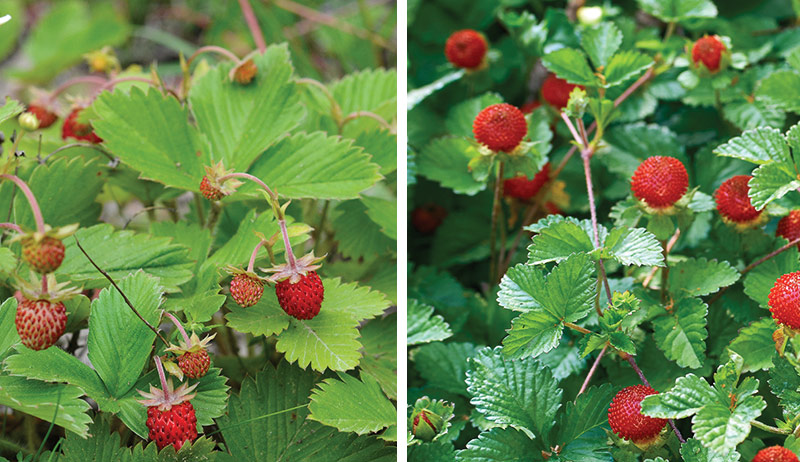
I really love foraging … in theory. The notion of searching out sustenance in the forest, gleaning nutrients from little more than that which Mother Nature gifts the denizens of this wild and strange planet just really speaks to the person I wish I was.
The person I actually am, though, is seized with anxiety over the thought of popping the wrong mushroom into my overeager mouth. I don’t have a great eye for details off the written page, so specific species traits of an herb’s leaf or other subtle indicators of “enjoyably edible” versus “avoid at all costs” don’t exactly leap out at me.
I am, generally speaking, cool with putting found fruit into my mouth, though, and wild strawberries are one of the few foraged foods I have history with. Growing up in suburban Kentucky, I was acquainted with a minuscule patch of tiny wild strawberries that emerged along the side of our poured-foundation home every spring. My dad loved to point them out when doing lawn work, carefully avoiding the crimson dots as he maneuvered the mower around the little patch.
I only remember eating one or two of these little berries in my youth. But getting the green light on enjoying a wild berry surely led me to comfortably foraging our farm’s forest edges for blackberries, raspberries and the occasional strawberry in my adult years.
The Pretender
The most important question when foraging is, of course, are there lookalike plants that could, you know … hurt me? The answer in the case of wild strawberries is yes and no.
Suitably called “mock strawberry,” Potentilla indica has differences in its tooth-like leaves and yellow blooms but puts out a very strawberry-looking fruit. The good news, however, is that Potentilla indica won’t hurt anything more than your feelings as it greets your mouth with a deflating total lack of flavor.
While you’d be forgiven for popping a mock strawberry into your mouth, you don’t need an eagle eye to spot the imposter. While real wild strawberries feature seeds set nearly flush with the flesh, mock strawberries have a notably bumpy texture very unlike the real thing.
Also, note how the plant grows. Mock strawberries grow upward, with the fruit perched atop a rigid stem, above the leaves. Wild strawberries grow downward, drooping toward the ground. So if you spy a bumpy “strawberry” sitting pretty, begging to be picked … keep looking.
Harvest Time!
There are a few different varieties of wild strawberries you may stumble across, though Virginia strawberry is the most common. Wild strawberries start to ripen in late May around my parts and can be found through October, depending on where you live. Here’s a fun tip: If you spy an ox eye daisy in bloom, you can go looking for wild strawberries, which ripen in the exact same seasonal window.
To harvest this tasty foraging find, pull back the leaves to look for drooping clusters underneath. (Remember: Real wild strawberries grow downward, close to the ground.) Then, go nuts—put as many into your bowl or basket as possible. Go ahead and eat what you want then and there, as wild strawberries don’t store well and have the best flavor—floral and sweet and kind of tangy—at time of picking.
Read more: Foraging directs the brews at Scratch Brewing Company.
Using Wild Strawberries
It’s highly unlikely you’ll gather enough wild strawberries to worry about longterm storage, but if you’re so lucky as to collect an abundance, you can (and should, as they spoil quickly left out) pop the extras in the freezer whole for use later. You could also whip up some preserves or a batch of strawberry dessert to enjoy the berries’ concentrated flavor. Or, if you’re feeling decadent, wild strawberries taste great in a cocktail.
You can also make a tea from wild strawberry leaves. Pick green, healthy leaves (spring leaves are the best), which you can either dry for later use or steep for about 10 minutes now for a tasty, healthy infusion. The tea is packed with vitamins and nutrients, with tannins for a green tea-like mouthfeel.
The most obvious benefit, though, is the taste, which is mildly fruity and perfect for a spring day.




